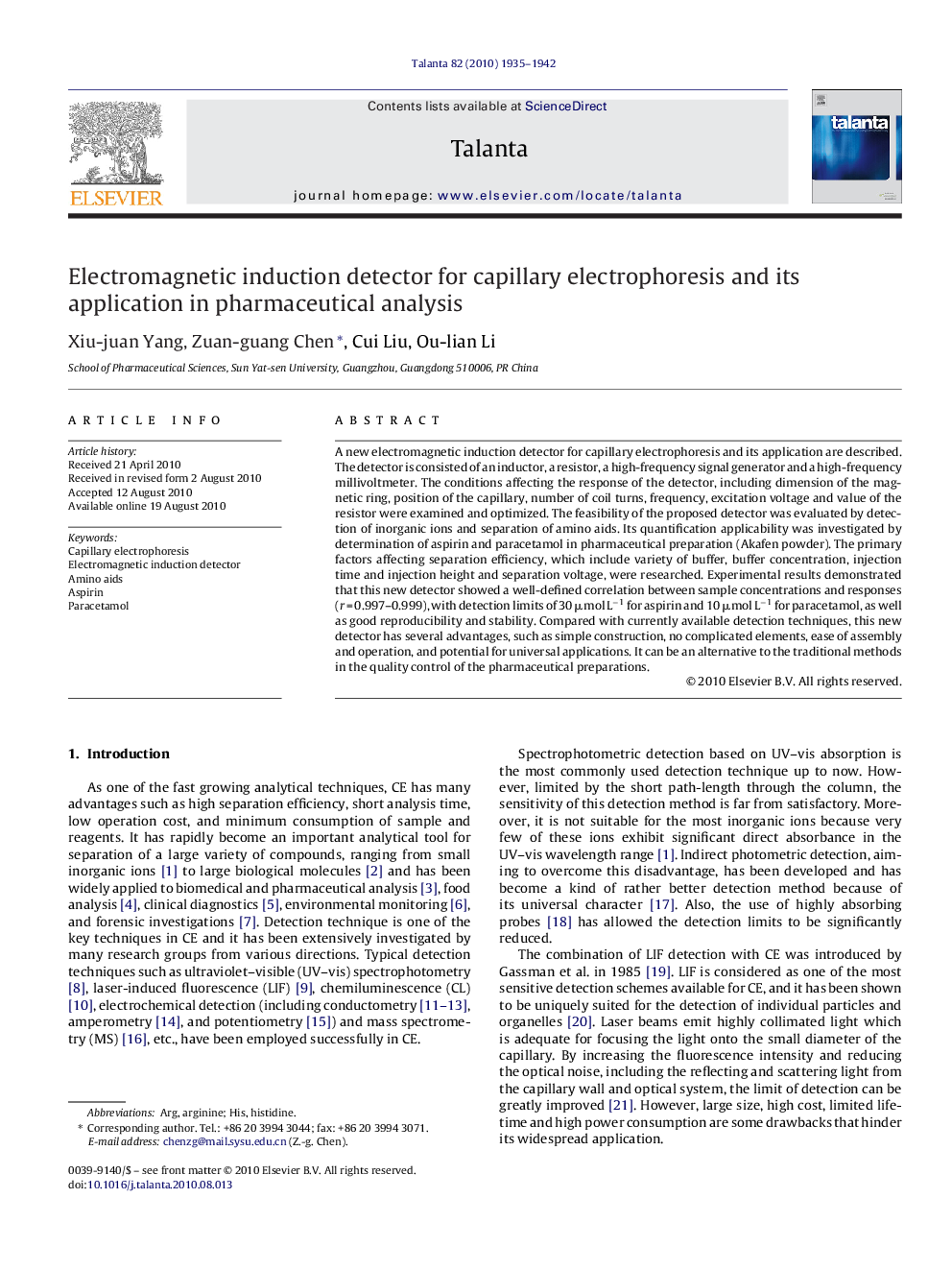| Article ID | Journal | Published Year | Pages | File Type |
|---|---|---|---|---|
| 1246222 | Talanta | 2010 | 8 Pages |
Abstract
A new electromagnetic induction detector for capillary electrophoresis and its application are described. The detector is consisted of an inductor, a resistor, a high-frequency signal generator and a high-frequency millivoltmeter. The conditions affecting the response of the detector, including dimension of the magnetic ring, position of the capillary, number of coil turns, frequency, excitation voltage and value of the resistor were examined and optimized. The feasibility of the proposed detector was evaluated by detection of inorganic ions and separation of amino aids. Its quantification applicability was investigated by determination of aspirin and paracetamol in pharmaceutical preparation (Akafen powder). The primary factors affecting separation efficiency, which include variety of buffer, buffer concentration, injection time and injection height and separation voltage, were researched. Experimental results demonstrated that this new detector showed a well-defined correlation between sample concentrations and responses (r = 0.997-0.999), with detection limits of 30 μmol Lâ1 for aspirin and 10 μmol Lâ1 for paracetamol, as well as good reproducibility and stability. Compared with currently available detection techniques, this new detector has several advantages, such as simple construction, no complicated elements, ease of assembly and operation, and potential for universal applications. It can be an alternative to the traditional methods in the quality control of the pharmaceutical preparations.
Related Topics
Physical Sciences and Engineering
Chemistry
Analytical Chemistry
Authors
Xiu-juan Yang, Zuan-guang Chen, Cui Liu, Ou-lian Li,
